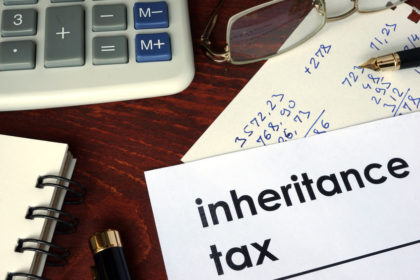5 minute read.
Malcolm Finney looks at the quirky deed of variation and its use for inheritance tax purposes but warns against its abuse.
It is, of course, impossible for a testator to predict what circumstances may exist at the date of their death. In particular, they will not know the circumstances, financial or otherwise, of their proposed beneficiaries.
‘Two-year’ discretionary trusts
To attempt to combat these areas of uncertainty and often with a view to mitigating Inheritance Tax (IHT) arising on death a testator may include in the will a two-year discretionary trust (within IHTA 1984, s 144). Such a trust may offer some flexibility, but any decisions are those of the trustees and not the beneficiaries.
Deeds of variation
A more focused approach may be for the testator to leave specific estate property to specified beneficiaries allowing the use of deeds of variation (DoVs) where appropriate (IHTA 1984, s 142) to ‘correct’ any perceived injustice and/or mitigate any IHT charge arising on the estate. A DoV permits the original recipient beneficiary to re-direct their inheritance to whomever they choose, whether the new recipients appear in the will or not.
A DoV must be executed in writing within two years of the testator’s death, but this should in most circumstances be sufficient time for a beneficiary to make any desired changes; strictly, a deed is not necessary, but it is common practice to use one. A classic use of a DoV would be where the testator leaves property, including cash, investments and so on, to a married son or daughter who decide to simply redirect their respective inheritances to their own children. The IHT charge on the testator’s estate would simply remain the same.
DoV followed by PETs
The following not uncommon scenario is dangerous. The testator decides to split their estate equally amongst their wife and two children. The two children feel that mother should have inherited dad’s estate, and accordingly they each execute a DoV re-directing their inheritance to mother. They are also aware that to do so has the effect of removing any IHT charge on dad’s estate. The three of them decide to carry out the above but with the understanding that mother will then make gifts out of her inheritance to each of the children as potentially exempt transfers (PETs) in the hope of surviving seven years.
Although a neat trick, HMRC would see this as an abuse of the DoV concept, with which the courts have already agreed (Lau v RCC [2009] WTLR 627; Vaughan-Jones & Anor v Vaughan-Jones & Ors [2015] EWHC 1086 (Ch)).
Double re-directions not possible
The same property cannot be re-directed a second time under IHTA 1984, s 142 (Russell v IRC [1988] STC 195), the second re-direction falling to be treated as a PET.
Severance of a joint tenancy
Somewhat surprisingly, even after the death of one joint beneficial tenant – which under property law means the surviving joint beneficial tenants take automatically under the survivorship principle – severance can be deemed to have occurred for IHTA 1984, s 142 purposes. This option may be particularly useful as many homes are held unbeknown to the owners on beneficial joint tenancies.
Combination of IHTA 1984, ss 144 and 142
Despite adding an extra layer, it may be that use of a two year discretionary trust under IHTA 1984, s 144 followed by DoVs with respect to any appointments out of the trust offers maximum flexibility in certain circumstances, although the two year time limit may be an issue.
Practical tip
HMRC are wary of DoVs, and care not to abuse them is paramount. Watch the two year window and make sure that all parties whose interests are adversely affected are signatories.




